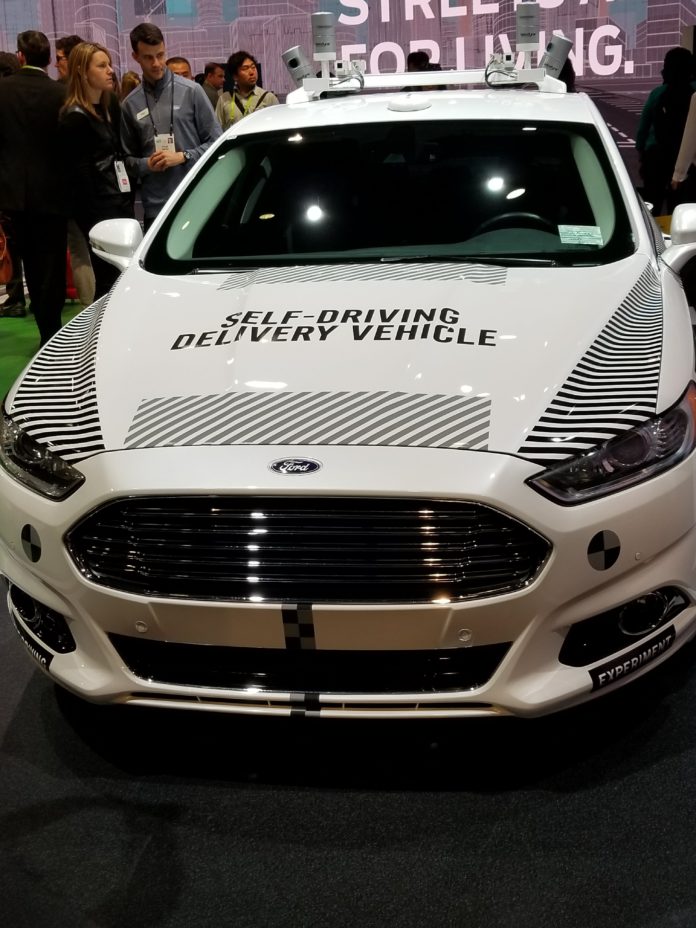LAS VEGAS—When politicians and industry executives talk about a new technology rollout, sometimes it isn’t pretty. However, at an autonomous vehicle panel last week’s CES, all sides agreed that the government must generate foundational rules and guidance, then let the market decide future development.
“No one party is in charge [of autonomous vehicle development]. We all have a role play,” said Gov. Rick Snyder, R-Mich. “We are not the ones creating the jobs, it is these private organization that are. It’s our job to create the environment. That means the infrastructure and regulatory framework—and consumers will decide the adoption curb.”
Michigan, early last year, created a 21-member Council for Future Mobility, which examines liability, law enforcement, equipment failure, societal and other issues, Snyder said.
Snyder said that governments, and the industry, need to do a better job of discussing such autonomous vehicle benefits as safety, efficiency and opportunity. “More seniors and disabled people will have more advantages [with autonomous vehicles],” he said.
One of the ways to take this message to the public is by showing them how their efficiency will increase by 20 percent with autonomous vehicle adoption and, as a result, household income will go up by 5 percent, said Tom Wilson, Allstate CEO. “Who wants it? Americans want it,” he said. “If we can deliver that income to customers in the next five years, that’s $3,000 per household per year, Americans’ love affair with cars will go away.”
The use of semi-autonomous technology in vehicles are making lives better, and less stressful, in Japan, said Daniele Schillaci, Nissan executive vice president. “In Japan, the answer is clear, people feel much less stressful, thanks to [semi-autonomous] ProPilot,” said Schillaci, who said that the technology, soon to be rolled out in the United States, has 35,000 opt-ins in Japan. “It’s going to be a building-block process that will take five-plus years [for fully autonomous vehicles].”
In China, Ya-Qin Zhang, Baidu President, said that 500 people die each day in auto accidents. “There are huge socioeconomic benefits in terms in safety [with autonomous vehicles],” he said. “In terms of efficiency, 30 percent of traffic jams in Beijing are caused by people looking for parking lots. Cars that are autonomously dispatched will increase overall efficiency. Consumers will embrace this idea.”
Zhang said full autonomy, or Level 5, will take time to rollout. “McKinsey says only 15 percent of cars, in 12 years, will be autonomously equipped. Though it is happening faster than most people thought,” he said.
Snyder also said there is a clear generational line when it comes to autonomous vehicle use. “We were brought up saying we want a really cool car. The 20-somethings today just want to know how they go from point A to point B,” he said. “It isn’t about physical asset ownership to them, it is about motor vehicle public transportation.”
In part, Schillaci disagreed with Snyder about cars simply being a future commodity. “To buy a car is an emotional purchase. Even in the Internet era,” he said. “While families, kids and things are changing, it still is a highly emotional component.”
Michigan at Autonomous Forefront
Snyder said that his state, because of the increase in testing, recently opened the American Center for Mobility in Ypsilanti. Such companies as Visteon and Toyota were the first to use the 500-acre driverless car test facility.
“What do you do with the amount of data generated by an autonomous vehicle? We established a true test bed facility that is in a controlled environment,” Snyder said.
Snyder envisions new jobs being created in Michigan, and other places, based on new autonomous technology. “There are going to be mobility technicians who can fix the LiDAR, radar, vision systems,” he said. “These technologists that are going to be in high-paying jobs. These positions will be absorbed by the industry in the first few years.”
Sharing Data and Collaboration…Not That Easy…
All the panelists agreed that the industry needs to share data and other technology to help rollout autonomous vehicles. That seems easy, but it never is, Wilson said. “Collaboration gets difficult–very fast. For our Drivewise [telematics system] it’s open source,” he said. “We are taking our telematics knowledge and making it available to other insurance companies. People ask why we are giving it to others, but we are stronger if we are together than apart.”
Zhang said Baidu has created an open system that may be highly disruptive to wireless carriers or auto Tier 1 suppliers. “It’s like in cell phones. Closed like Apple or open like Android,” he said. “There is no company that can do everything from scratch—the car, platform, or services. We want to be the Android of the auto industry in the future.”




























